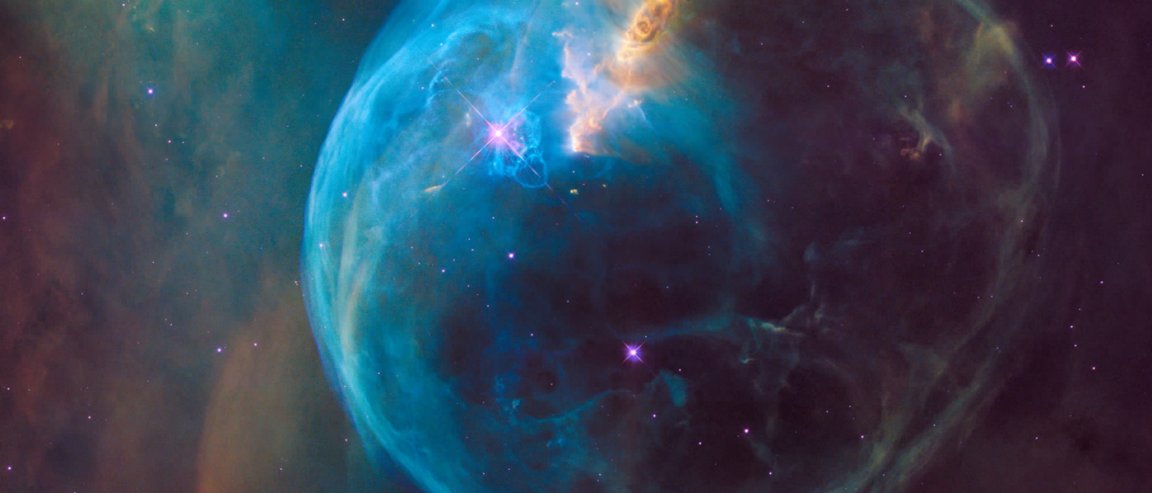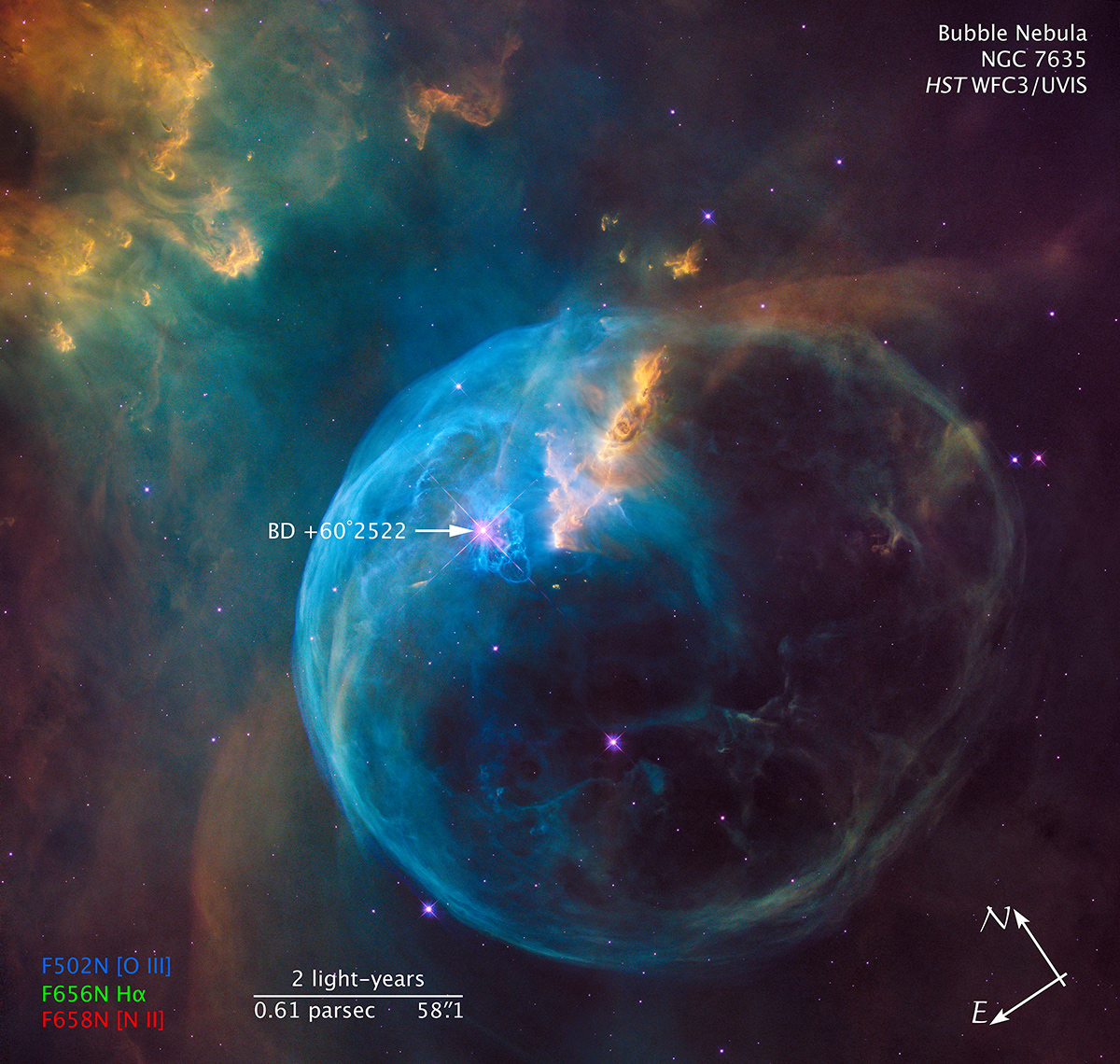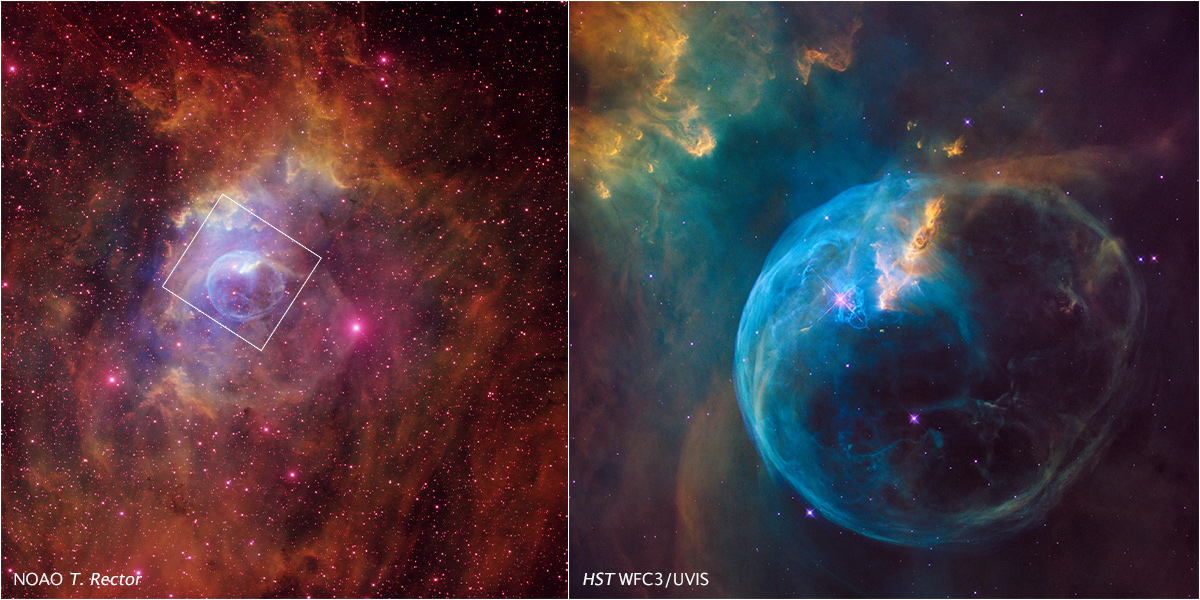
NASA’s Hubble Space Telescope just celebrated its 26th birthday, and to mark the occasion, astronomers highlighted an image captured by Hubble that shows a gigantic bubble being inflated by a super-hot star.
And it’s pretty spectacular.

The Hubble Space Telescope was launched into Earth’s orbit in April 24, 1990, carried by the STS-31 space shuttle crew.
To commemorate the recent anniversary, astronaut and associate administrator of NASA’s Science Mission Directorate, John Grunsfeld, stated that the image captures what Hubble is all about: “As Hubble makes its 26th revolution around our home star, the Sun, we celebrate the event with a spectacular image of a dynamic and exciting interaction of a young star with its environment….the view of the Bubble Nebula, crafted from Wide Field Camera 3 images, reminds us that Hubble gives us a front-row seat to the awe-inspiring universe we live in.”
Located 7,100 light-years from Earth, the Bubble Nebula, also called NGC 7635, Sharpless 162, or Caldwell 11, is near a giant molecular cloud. It was first discovered by William Herschel in 1787.
The nebula is 7 light-years across, which is 1.5 times the distance between the Earth and Alpha Centauri (the closest star to Earth, aside from the Sun). Ultimately, the nebula is formed by a burning hot star in its center that’s 45 times the size of our Sun.
The star, designated SAO 20575 or BD+602522, burns so hot that its gas escapes into space in the form of a stellar wind that moves at more than 6.4 million km/h (4 million mph).

The different colors are caused by the varying temperatures that the gases are heated to. Oxygen emits blue light while the dense pillars of cool hydrogen gas mixed with nitrogen emit yellow light.
The edges of the bubble expands asymmetrically, making the star at its center appear way off-center. This is because as the bubble expands, it reaches dense regions of cold gas on one of its sides and slowing its expands on that side.